- Home
- TV History
- Network Studios History
- Cameras
- Archives
- Viewseum
- About / Comments
Skip to content
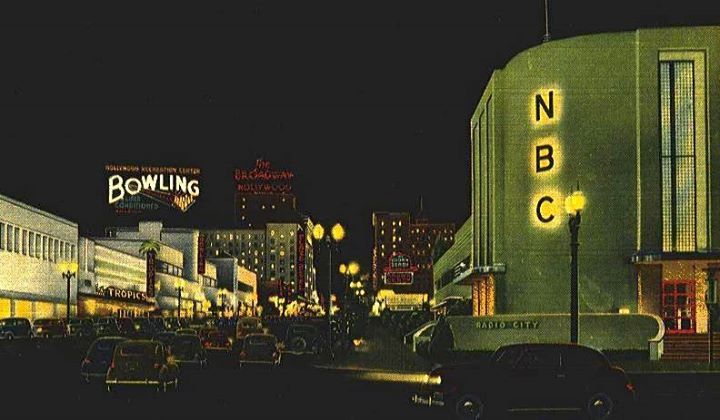

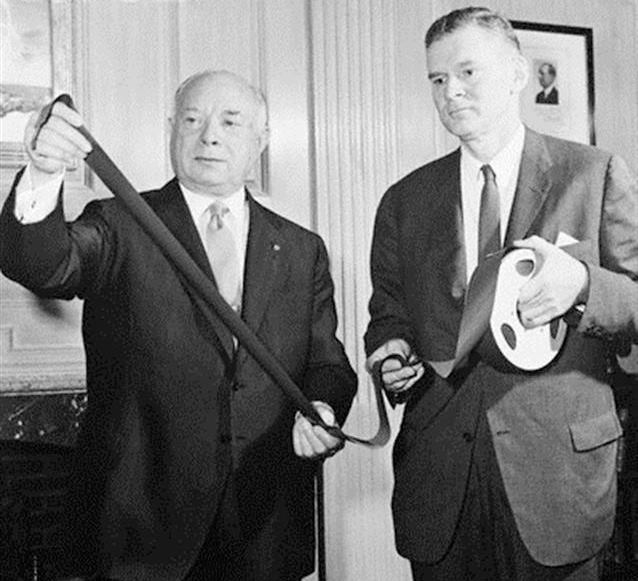

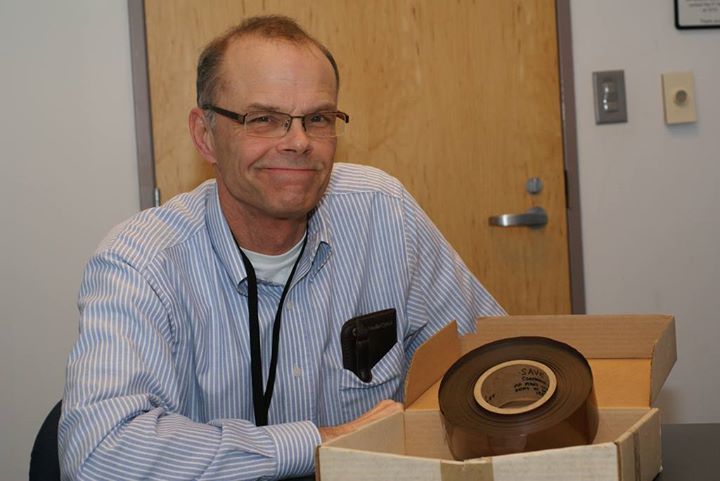

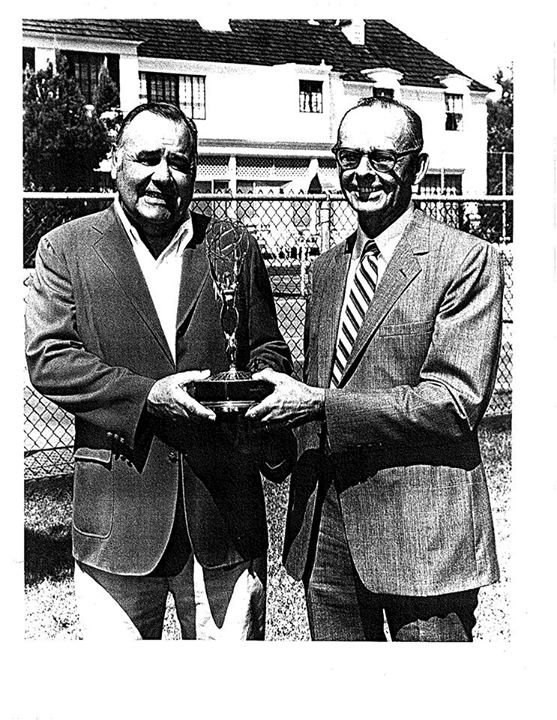



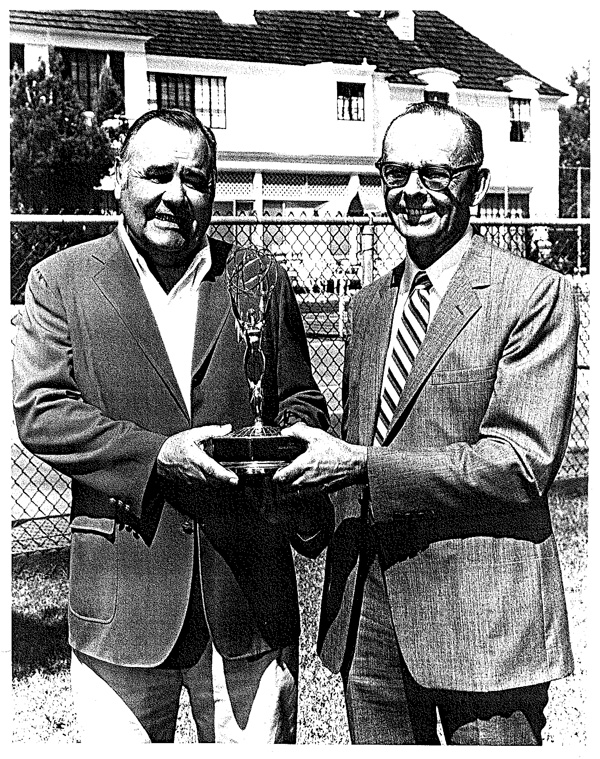
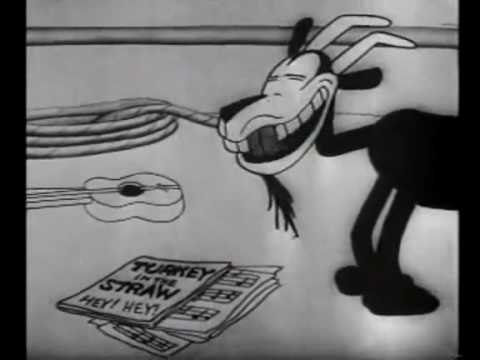

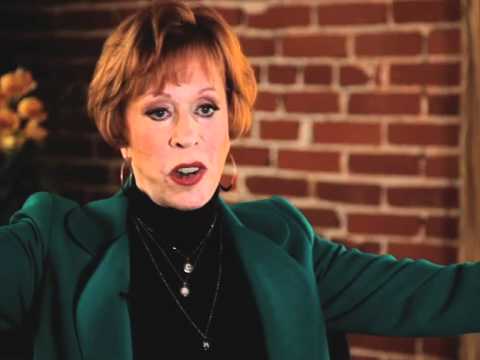







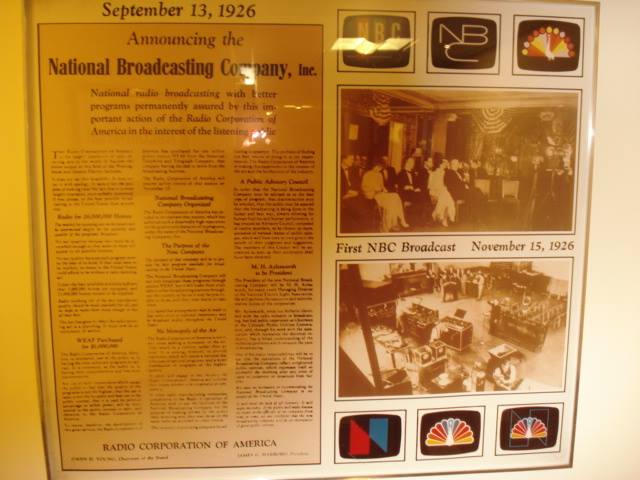

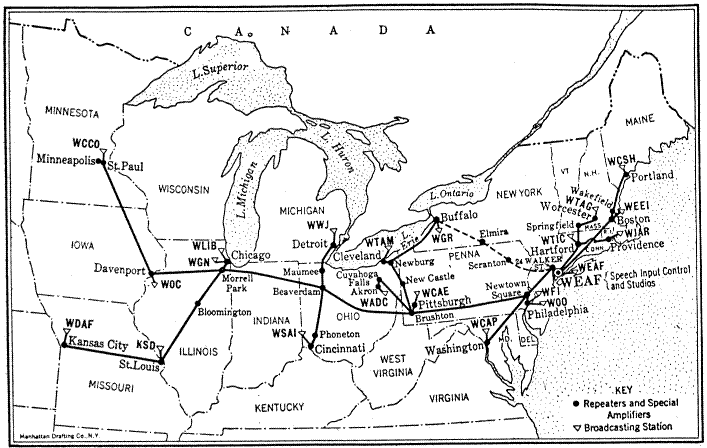



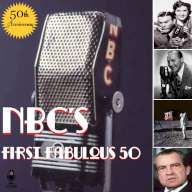

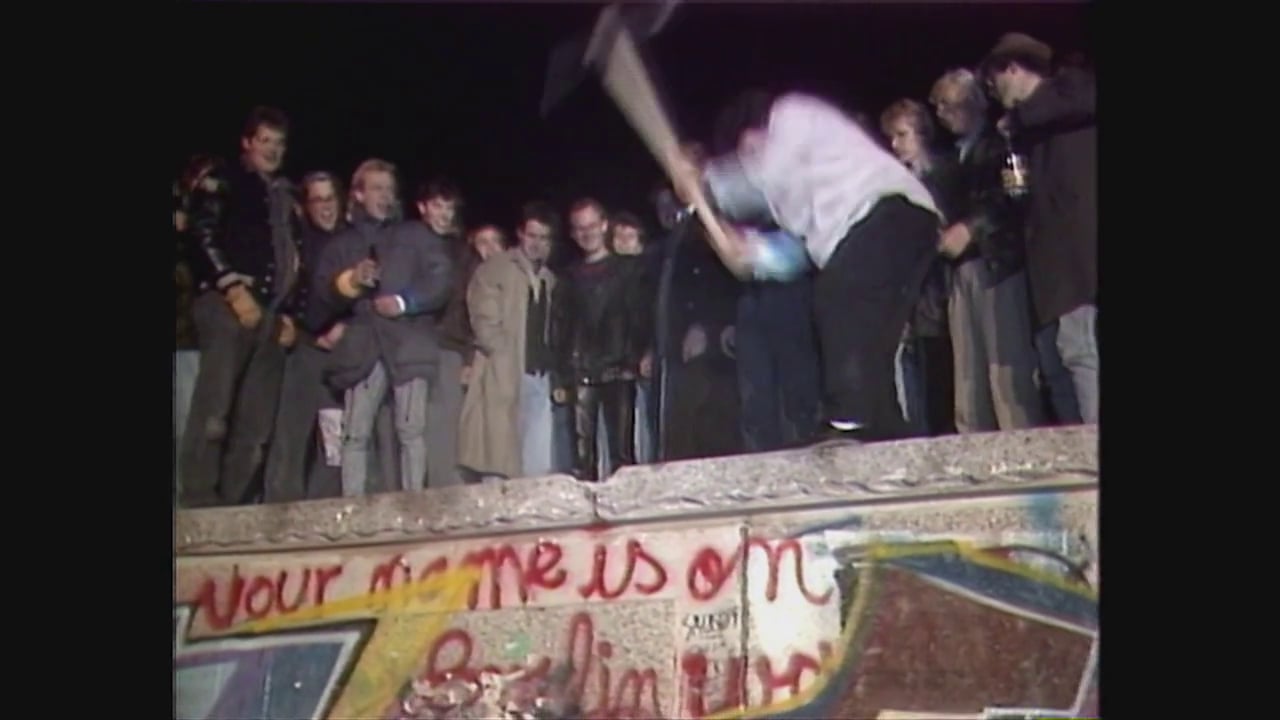

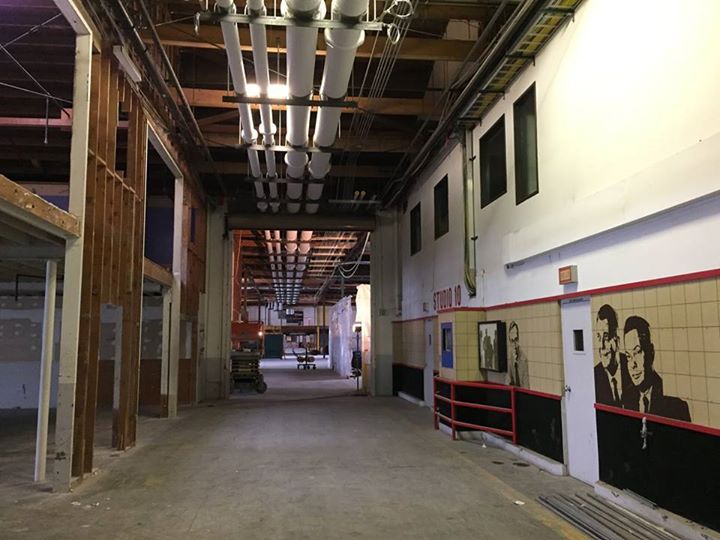

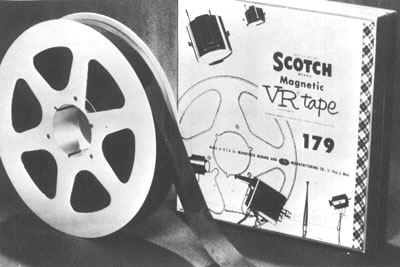



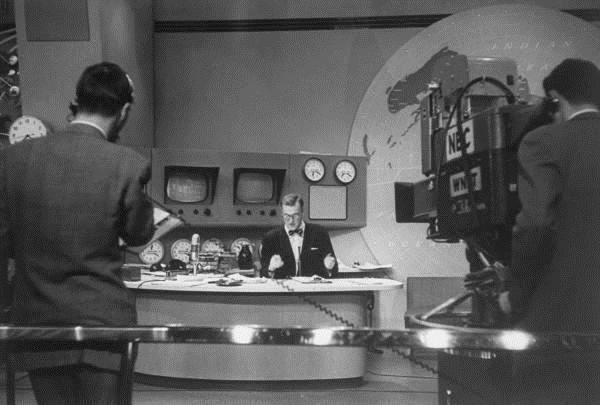

Posts in Category: TV History
Page 48 of 136
« Previous
1
2
3
4
5
6
7
8
9
10
11
12
13
14
15
16
17
18
19
20
21
22
23
24
25
26
27
28
29
30
31
32
33
34
35
36
37
38
39
40
41
42
43
44
45
46
47
48
49
50
51
52
53
54
55
56
57
58
59
60
61
62
63
64
65
66
67
68
69
70
71
72
73
74
75
76
77
78
79
80
81
82
83
84
85
86
87
88
89
90
91
92
93
94
95
96
97
98
99
100
101
102
103
104
105
106
107
108
109
110
111
112
113
114
115
116
117
118
119
120
121
122
123
124
125
126
127
128
129
130
131
132
133
134
135
136
Next » ABC Hollywood…1533-44 North Vine Street, A Truly Historic Address
On November 19, 2014
- TV History
ABC Hollywood…1533-44 North Vine Street, A Truly Historic Address
Did you know America’s first network Disc Jockeys broadcast from this building? Or, that this was ABC’s first studio? As we’ll see below, all that and more is true, but let’s start with the building itself.
As you see in the first (big) photo from 1944, this was a bowling alley but not just any bowling alley. When the Hollywood Recreation Center was built in 1940, this was claimed to be the largest and most modern in the nation with 22 lanes and I think it was open 24 hours to accommodate all the people working at NBC and CBS, just down the block. Notice in this photo, on the right, just up from NBC is the Vine Street Brown Derby location and across the street, we see The Tropics Restaurant which was later owned by Tom Breneman.
Breneman was host of the radio show ‘Breakfast In Hollywood’ which aired on the Blue Network owned by NBC and later ABC. The show aired from 1941 to 1948.
By the mid-1940s, Breneman had ten million listeners on ABC. The popularity of the radio program was such that he created his own magazine, and in 1945 he opened his own establishment and broadcast his show live from Tom Breneman’s Restaurant. Initially, his show was in The Tropics Restaurant location, but soon after, he was able to buy the Hollywood Recreation Center and he moved his show into this now giant restaurant.
On April 28, 1948, just before the broadcast of ‘Breakfast In Hollywood’ was to begin Breneman had a heart attack and died. Garry Moore took over hosting duties but the show quickly failed without Breneman.
After the radio program ended Sammy Davis Jr. and a few investors purchased the building. I think they held it for only a year before putting it on the market and by late 1949 or early 1950, ABC’s KECA and the ABC radio network studios were in the building. Before this, the ABC network programs from Hollywood had originated in three auxiliary studios down the street at NBC, which was part of the deal in their purchase of the Blue Network in 1943.
According to our friend Joel Tator, ABC’s radio studios there were initially called studios X, Y and Z, but were later changed to A, B and C. There were not any dedicated television studios in this building, but occasionally, live broadcasts were done with a remote unit from Studio A which was the largest radio studio. B and C were radio only.
Now called The ABC Radio Center, Eddie Cantor and Frank Sinatra both became disc jockey’s at ABC and are believed to be the first network radio DJs. In fairness, listeners to New York’s 1130 WNEW were awaiting developments in the Lindbergh kidnapping trial, radio personality Martin Block built an audience by playing records between the Lindbergh news bulletins. This led to Block’s show, ‘The Make Believe Ballroom’, which began February 3, 1935. There were other local stations using DJs, but Sinatra and Cantor are thought to be the first to do it on a network.
I don’t know when ABC left here, but before I go to what happened next in this building, I want to say that I think when ABC took over this building, it was the first time the radio network had offices of it’s own. I think ABC was still sharing the NBC facilities in NCY, Chicago and WDC till a year or so after this.
Jumping ahead, after ABC left 1533 Vine Street, Trans American Video (TAV) took over the building sometime around 1974 I think. This is where ‘The Merv Griffin Show’ came from. Today, only the facade remains and the interior is condos and retail space. More detail on the photos so please click through them. Thanks to all that helped with the gathering of this info, including David Schwartz. Enjoy and SHARE THIS! It’s the most complete look at this historic address yet. -Bobby Ellerbee
The Answer To A Chicken & Egg Question On Video Tape…
On November 19, 2014
- TV History
The Answer To A Chicken & Egg Question On Video Tape…
As I wrote and posted these 3M stories on video tape’s development, I kept wondering how Ampex could develop their machines if 3M only joined the party the day before the debut. If 3M didn’t make videotape before the debut, then who did?
Here’s the answer…Reeves Sound Craft, headed by none other than Hazard Reeves. Most of us know the Reeves name from Reeves Teletape, but he has an amazing background that we’ll look at tomorrow.
As for the videotape, I think Reeves had a plant in Connecticut that began making audio tape in 1950. Remember, RCA was also working on videotape and in the photo below, we see Reeves with RCA’s David Sarnoff and a reel of his videotape. I think this photo is from around 1953. If you have a Hazard Reeves story, let us know! Enjoy and share! -Bobby Ellerbee


“The Rest Of The Story”…3M’s Development Of Videotape (RARE)
On November 19, 2014
- TV History
“The Rest Of The Story”…A Narrative By Neil Gjere
Thanks to Neil’s efforts, over this past week, we have been able to see things few have ever seen and get to meet the man behind the creation of the world’s first commercially available brand of video tape. Without him, we would not have been able to see the 3M ’20 Years Of Video Tape’ production from 1976, see the remaining artifacts from those early days of have the great 18 page story of how it all happened from Mel Sater himself.
Below the line is Neil’s account of the meeting with Bob Sater and the history that unfolded. Enjoy! -Bobby Ellerbee
___________________________________________________
One pass was all it took to digitize what had been sitting in a basement for thirty years. Probably because I had all manner of emergency machine cleaning supplies at the ready should I encounter a video tape “Code Blue”. If there was any question on the longevity of video tape, this performance was evidence of its durability. And probably testimonial to all of the outstanding work of 3M and the people of the program I shared earlier “20 Years of Videotape”
So now with the show safely preserved digitally, and having no real idea what to do with it, into the bag it went… For about a year. I work for the PBS affiliate here in St. Paul/Minneapolis and let me tell you, we have arguably the greatest group of donors anyone can ask for. And as a result, we maintain regular contact with them. One day, an email arrives from our head of Philanthropic Funding directed at us staff engineers in the form of a trivia question:
“Can any of you tell me what was the first show ever where video tape was used?” Of course, if you watched the previously posted show you know the answer. And at that time, so did I!
“Douglas Edwards and the News” was my reply. “But why do you ask?” I added
“Because I just had lunch with the son of the man who invented video tape and his wife, Bob and Gail Sater. And we wanted to see if we could stump you.”
Sater?
Now remember, this occurred a year after my little “dub” session so the contents of that program were a very faded memory. But Sater? Yeah that rings a bell.
I throw in a copy of the DVD I managed to find after a year of storage, and there he is. Mel Sater. I replied back to our now growing email thread and explained how I came to know the answer to the trivia question oh and one final thing, “I have something Bob may be interested in seeing.” As I explained the story, I offered up a copy to our head of Philanthropic Funding to present to the Sater’s as a gesture of thanks for being the wonderful donors they’ve been to the station these many years.
As I correctly assumed, Mel was no longer with us and I thought Bob and his family would appreciate seeing their Dad again even briefly. A few days go by and I receive another email from our donor Funding area: “I just spoke with Gail Sater and she was excited at the prospect of seeing her father-in-law after all these years and they would like to meet you as well! When are you available to meet?”
Now I begin to really start wrapping my head around this, all of the moments in this story up to now that have conspired to bring me to that very moment: The recording back in ’79, the call from my teacher thirty years later with his request, the discovery of the tape, the ability to have a machine available to even play the thing giving me the ability to re-record it digitally, the chance lunch, the trivia question, and now this: I’m going to meet the guy who’s DAD invented video tape!
On the day of the meeting, I was told that the DVD’s I had previously copied with the express intent of giving them to the Sater’s prior had not reached them. At their request. “We want to watch it with you both” Gail wrote in an e-mail to us confirming our appointment. “And we have a couple of things we’d like to share with you!” Oh? I think to myself…
As you can see by the pictures, Bob Sater is very much the image of his Dad. We had a very nice chat talking about family, grandkids, retirement, Bob and Gail were truly reflective of the kindness and generosity we are very fortunate to call our supporters.
Bob told the story about how the overnight “samples” were transported to a waiting aircraft which was idling on the runway at nearby Holman Field to an awaiting Bill Wetzel to make their trip to Chicago and the awaiting Ampex demonstration. And then, I pushed play on the DVD player. A nice little smile appeared on both Bob and Gail’s faces when “Melvin” had his moment of screen time. To see that alone was worth everything I’d done to that point to recover and save this piece of recorded history.
Even if no one else In the world ever saw it but us, it was worth this moment. At the end, Both Bob and Gail thanked me and told me they’d never seen nor heard of Mel even participating in the recording and were grateful to receive a copy. “But now we have something to share with you!” Gail exclaims. And with that, Bob, reaches under the table for a grocery bag I never even noticed entering the room with them and sets it on the table before all of us.
As he reaches into the bag, I have no idea what’s coming next. He pulls out a tape box…one many of us would recognize as being responsible for many back ailments if carried in quantity. “Go ahead and open it” Bob says with a smile.
As I do, I immediately recognize it as one of the “props” used in the 3M program ’20 Years Of Video Tape’ we’d just all watched. It was the “companion” reel of tape sent to Chicago for the 1956 NAB demonstration. It appears someone else kept a few items of history as well. As you can see by the pictures, it was every bit as crude as was shown when Mel held it up in the 20 Year video. Mel’s reminder to himself was in the form of notations in his own hand in the core of the cardboard reel.
I was truly holding a piece of broadcast history. As I sat stunned by what was in front of me, Gail produces another item from the bag in the form of a manila file folder. Contained inside were a collection of memorabilia that had been collected throughout the years marking the great achievement including Mel being the recipient of a Technical Emmy award as well as Mel’s own personal notes documenting much of the work he and his colleagues performed to end up with the product I was now holding in my hands. And last but not least, a small envelope.
As I opened it, Gail begins to tell me, “That is a piece of tape from the reel used for the actual demonstration back in 1956 with Mel’s own handwriting on the label” “We’d like you to have that.” Gail ends. Wow. What does a guy say? Could I say I had a few tears? Yeah, I could say that. Yes, I have it, and Yes, I will make sure it is treated with the utmost respect due an item which literally changed the world of broadcasting forever.
As for the actual companion reel of tape? It will remain in the Sater family for now but I most certainly offered up my services to make sure it finds a proper home when the time comes. And as another great broadcast pioneer Paul Harvey “once” said: “Now you have, the rest of the story.” -Neil Gjere
Below is a photo of Bob Sater with the companion roll of tape taken to Chicago for the first Ampex demonstration of video tape.
The History Of 3M Video Tape Development By The Man Who Did It!
On November 19, 2014
- TV History
The History Of Video Tape Development By The Man Who Did It!
Above is Melvin Sater’s 18 page account of those early days of developing the first commercially available line of video tape. Most of this amazing read has to do with the 1956 and ’57 period, but takes us into the mid ’60s and color tape.
Those first rolls used for the April ’56 NAB demonstration could only give 15 to 25 playbacks, but in order to switch from kinescopes to videotape that next summer, the networks needed something that would give them at least 65 to 100 playbacks.
The photo of the piece of tape from the April 12, 1957 CBS tests we saw yesterday is explained here and they were elated that they were able to get up to 390 replays before the tape broke down, but there were more hurdles to overcome. The 3M plant was working literally around the clock to produce enough tape for the summer of ’57 introduction, but 97% of the initial runs had to be scrapped and the manufacturing process modified.
By the way…they were flying blind on this! Ampex had not been able to get them a VTR to use in testing, so this was all theory and trial and error. History buffs will want to save this link and share it with their friends as this is the only place to find this on the web. Our thanks again to Neil Gjere for sharing this. Up next is Neil’s backstory of how he met Mel Sater’s son and was able to gather all this rare history, the iconic relics and rare photos. Enjoy and Share! -Bobby Ellerbee
Below is a photo of Mel Sater and Johnathan Winters. The EMMY was presented to Sater for his work in videotape development. The first use of videotape in a network show was a three minute black and white insert into ‘The Johnathan Winters Show’ by NBC in 1957. The prerecorded song by Dorothy Collins was inserted without fanfare to see if the viewing audience would notice it. They didn’t.
History From A Different Angle…NBC Radio City West
On November 18, 2014
- TV History
History From A Different Angle…NBC Radio City West
The street on the left is Sunset Boulevard and the next cross street is Vine Street. Less than a block behind the photographer is CBS Columbia Square and less than a block up on Vine Street was ABC’s broadcast center. This whole area was radio city!
Someone asked recently about when ABC went into that Vine Street location, and I can’t find a date on it, but I did find another interesting fact. When NBC sold the Blue Network to Edward J. Nobles for $8 million, that Blue package contained leases on land-lines and on studio facilities in New York, Washington, Chicago and Los Angeles; contracts with talent and with about sixty affiliates; the trademark and “good will” associated with the Blue name; and licenses for three stations…WJZ in New York, San Francisco’s KGO, and WENR in Chicago.
The lease allowed them 10 years to relocate the studios and transmitters. That happened in 1943, so, per the agreement, ABC could have operated from the NBC facilities until ’53, but I think they may have only stayed about six or seven years. I think that ABC Radio center was there on Vine before they built KECA TV in 1949 and I think that was at the Prospect Lot. Anyone have any information on the ABC Radio Vine Street facility? Enjoy and share! -Bobby Ellerbee
The 3M History Of Video Tape…Introduction, Part 1
On November 18, 2014
- TV History
The presentation of this information will be as much of an experiment for me as 3M’s creation of a commercial line of video tape in only 22 hours.
On Thursday of last week, November 13, I posted the only online copy of the 3M video presentation of their “20 Years Of Video Tape” special that ran at the 1976 NAB show. That came from Neil Gjere, who has also sent along some extremely rare things you will be seeing here. Among them is a fantastic 18-page report written by Melvin Sater, who led the 3M project to develop the first commercial line of video tape.

Jonathan Winters presents Mel Sater an Emmy Award.
Before I post that, I need to post a few things that will get you familiar with the people and events that lead up to this, and this is the first introductory piece, or what the newsmen among us would call “a backgrounder.”
First, here is a 3M announcement that Mel Sater is receiving an EMMY for his work in video tape. In the section called “Sader’s Scramble,” you can read about the call from Ampex the day before video tape recording was introduced in 1956.
Here’s a 1982 article from a 3M house publication that commemorates Mel’s induction into the Video Hall of Fame.
And here’s a neat little profile of Mel Sater from 1984.
And now that we know something about the man behind the innovation, here is Mel Sater’s personal account of this historic achievement. Enjoy and share! – Bobby Ellerbee


Happy Birthday To Mickey Mouse…86 Years Old Today
On November 18, 2014
- TV History
Happy Birthday To Mickey Mouse…86 Years Old Today
On November 18, 1928, ‘Steamboat Willie’, starring Mickey Mouse, was released and shown in theaters across the country. It was wildly popular. This was the first cartoon with synchronized sound and was the first cartoon to feature a fully post-produced soundtrack which distinguished it from earlier sound cartoons.
Although animation filmmakers Dave and Max Fleischer’s Inkwell Studios had already produced seven sound cartoons, part of the Song Car-Tunes which started in May 1924, those failed to keep the sound fully synchronized. ‘Steamboat Willie’ was produced using a click track to help with musical cues. The click track was sufficiently useful as a synchronization tool as optical marks were made on the film to indicate precise timings for musical accompaniment.
In 1994 professional animators voted Steamboat Willie 13th in the book The 50 Greatest Cartoons, which listed the greatest cartoons of all time. Enjoy and share! -Bobby Ellerbee
By the way, Walt is the voice of Mickey in this historic cartoon, and although Mickey Mouse had been seen in theaters before this, his official birthday is marked as today in consideration of the success of ‘Steamboat Willie’.
http://www.youtube.com/watch?v=BBgghnQF6E4
The classic Mickey Mouse cartoon


November 13, 1976…Carol Burnett’s ‘Went With The Wind’ Sketch Debuted
On November 17, 2014
- TV History
November 13, 1976…Carol Burnett’s ‘Went With The Wind’ Sketch Debut
One of the funniest and most memorable moments in American television came to us thirty eight years ago this month.
In the clip below, Carol talks about the sketch and the dress. In another interview, I’ve heard her say that only she and Harvey Korman had seen the Bob Mackie dress. She had to let Harvey in on the site gag or he would break up to and not be able to do his lines to set her up for the big payoff line, “I saw it in the window and couldn’t resist”. Harvey actually makes for a pretty convincing Rhett Butler doesn’t he? Have a laugh, enjoy and share! -Bobby Ellerbee
https://www.youtube.com/watch?v=l0dqnZ2qyj4
Time Life’s The Carol Burnett Show — The Ultimate Collection: Now available! 50 episodes on 22 DVDs http://bit.ly/TLCarol BONUS: Showcase Collector’s Box + …


Bonded Cellular = Live TV Anywhere, Anytime With No News Van?
On November 17, 2014
- TV History
Bonded Cellular = Live TV Anywhere, Anytime With No News Van?
This is just amazing. It may be old hat to a lot of you, but I’m just learning about this and thought I’d pass this along. This video is a demonstration of how the top of the line, LiveU LU 70 backpack mobile unit works.
To explain just what Bonded Cellular is, here is how LiveU describes it at their website. http://www.liveu.tv/
“The LiveU solution bonds up to 14 cellular (3G/4G – LTE/WiMAX) modems over multiple carriers, as well as multiple LAN and even BGAN satellite connections. This creates a reliable, broadband video uplink pipe over multiple narrow-band pipes. Using any camera, the fully-integrated self-powered compact unit provides video resolution ranging from CIF through D1 (SD) and up to 1080i HD. The bonded 3G/4G solution aggregates all data connections simultaneously to achieve high bandwidth and smooth transmission, even as bandwidth and signal levels change across the different connections.”
We learn something new everyday don’t we? Thanks to CNN’s Andy Rose for bringing this to my attention. Enjoy and share! -Bobby Ellerbee
https://www.youtube.com/watch?v=BfPn8rgeaKQ
LiveU is the live unit that allows you to Go Live Anywhere, Anytime. www.LiveU.com. LiveU is the Live Unit we all have dreamed of, and Ari Epstein of LiveU I…


How The Yellow Down Marker Appears In Football
On November 17, 2014
- TV History
By Request…How The Yellow Down Marker Appears In Football
In a comment on yesterday’s CBS/NFL video, Pat Phos Martin wondered how the yellow first down markers and blue line of scrimmage marker magically appear on our screens.
By the way, on the Sport Vision site, you can see how other sports graphics work too.


This Day in Football: The Heidi Bowl
On November 17, 2014
- TV History
November 17, 1968…’Heidi’ Trumps The Jets – Raiders Finale On NBC
I remember watching this…I had just turned 18. Did you see this?
For all intents and purposes, it looked like the Jets had won and with only a minute left, there was no way for an Oakland comeback…BUT, comeback they DID! Here’s a great video recap of what happened and how it happened. Enjoy and share! -Bobby Ellerbee
November 15, 1926…The First NBC Radio Broadcast, Part 1
On November 15, 2014
- TV History
November 15, 1926…The First NBC Radio Broadcast, Part 1
The Bedrock History And Timeline…Please Start Here
Below is a history of how this all started and by understanding this timeline and these events, you will better understand the parts that follow. It’s a story that I will need to tell in several parts and am composing this in my head as we discover this fascinating history together and as you will see, there is a lot of history that leads up to the November 15, 1926 debut of NBC.
AT&T had constructed and licensed radio station WEAF in New York in June of 1922. It’s first ‘network’ ‘broadcast occurred on January 4, 1923, between WEAF in New York City and WNAC in Boston, Massachusetts. In early 1924, AT&T made the first transcontinental network broadcast, between WEAF in New York City, and KPO in San Francisco. By early 1926, the “WEAF Chain” had increased to nineteen cities in the Northeast and Midwest, as it slowly spread from its base in New York City. Through these efforts, from 1922 until 1926 AT&T was the most important company in the programming side of U.S. broadcasting.
A year before AT&T began radio, Westinghouse signed on WJZ in Newark, New Jersey in 1921 and operated the station till it was sold to RCA in 1923. That year would also see the debut of WRC in Washington DC which RCA built and was their first construction.
The first network broadcast by RCA occurred in December 1923, and involved only WJZ and the General Electric Co.’s station WGY at Schenectady, N. Y. The connection was made with Western Union telegraph wires. WRC would soon be linked in too.
RCA would have have liked to have used AT&T lines, but AT&T would not make them available to a competitor. The telegraph lines were not very good but RCA did the best they could with what they had.
By late 1925, in the midst of hard-fought battles over patent rights, AT&T abruptly decided that it no longer wanted to operate stations or run a radio network. In May, 1926, AT&T transferred WEAF and the network operations into a wholly-owned subsidiary, the Broadcasting Company of America.
Then came the bombshell announcement — AT&T was selling WEAF and its network for $1,000,000 to the “Radio Group”. The sale included the right to lease from AT&T the telephone longlines that had been found to be essential for linking together a national network. Moreover, the negotiations had also given the “Radio Group” the right to sell airtime, which was the subject of the long fought court battles.
Here, we need to explain the “Radio Group” which was proposed in a June 17, 1922 memo from David Sarnoff. It suggested RCA take the lead in the organization of “a separate and distinct company… to be controlled by the Radio Corporation of America, but its board of directors and officers to include members of the General Electric Company and the Westinghouse Electric Company and possibly also a few from the outside, prominent in national and civic affairs”.
The first effort from the “Radio Group” came shortly after AT&T began organizing its radio network in 1923. The three major companies that comprised the “Radio Group” — General Electric, Westinghouse, and their jointly-owned subsidiary, the Radio Corporation of America — responded with an expansion of their own efforts, which initially would produce a small radio network centered on WJZ (now WABC) in New York City, but would ultimately develop into the most dominant broadcasting company in the country…The National Broadcasting Company.
These are photos I took on the second floor at NBC, just outside the Broadcast Operations Center that commemorate the formation of The National Broadcasting Company on September 13, 1926, and the first broadcast on the NBC Radio Network just two months later.
Much more to come in the next several parts! Enjoy and share! -Bobby Ellerbee
November 15, 1926…The First NBC Radio Broadcast, Part 2
On November 15, 2014
- TV History
November 15, 1926…The First NBC Radio Broadcast, Part 2
The Basis Of The Red And Blue Networks
In part one, we laid out the important basics of how all this came to be, so if you haven’t read that, go there first and this will make a lot more sense.
Many believe that NBC created the first radio network but that is not exactly the case. As we saw in Part 1, AT&T’s first network radio broadcast was January 4, 1923 between WEAF in NYC and WNAC in Boston. RCA’s first network broadcast was in December of 1923 between WJZ in NYC and General Electric’s station WGY in Schenectady.
Below are some very interesting images from those first days of network radio. The first shows the WEAF Network which would in 1926 become the basis for the NBC Red Network. There are 17 stations on the network.
The second photo shows the performers on one of network radios first shows and was broadcast on the WEAF network. The star of the show is on the far right…that’s Will Rogers with The Waldorf Astoria Orchestra on ‘The Eveready Hour’ in 1923.
The next image shows the WJZ Network which had only four stations. This was the basis for the NBC Blue Network. The final image is a shot from the very cozy WJZ studios of one of their first network broadcasts.
More on all five of the early NBC networks in Part 3. Enjoy and share! -Bobby Ellerbee
November 15, 1926…The First NBC Radio Broadcast, Part 3
On November 15, 2014
- TV History
November 15, 1926…The First NBC Radio Broadcast, Part 3
The “Color” Networks…Red, Blue, White, Gold And Orange
If you thought there was just Red and Blue, think again, but these didn’t all occur on November 15, 1926.
In the beginning, NBC operated two networks: NBC Blue, headed by station WJZ, and NBC Red, headed by WEAF. This situation arose, due to NBC then owning two stations in New York City (WEAF and WJZ). WEAF and the ‘Red’ Network became the flagship network and offered most of the established shows…and advertisers. NBC Red was the larger radio network, carrying the leading entertainment and music programs. In addition, many Red affiliates were high-powered, clear-channel stations, heard nationwide. NBC Blue offered most of the company’s news and cultural programs, many of them “sustaining” or unsponsored.
How did they arrive at the names ‘Red’ and ‘Blue’? The legend is that it was either the red and blue pencil marks on the engineering map or the red and blue push pins on the management’s maps.
NBC White was NBC’s Religious Programming network, also referred to as The Watchtower Network, and operated from about 1928 to 1936.
NBC’s Orange Network was it’s West Coast affiliates, KGO, KFI, KGW, KOMO, and KHQ, beginning operations in 1931. NBC also operated a ‘Gold Network’ comprised of KPO, KECA, KEX, KJR, and KGA, soon after disbanded and absorbed by the Orange Network in 1933.
NBC’s Blue Network became ABC in 1943, due to a landmark Supreme Court Ruling that held that NBC had specifically maintained the two parallel, Red and Blue, networks for the express purpose of stifling competition. NBC subsequently extricated itself by selling ‘NBC Blue’ to Edward Noble of the Lifesaver Candy Company, who first called his new network, simply ‘The Blue Network’. That name was followed by ‘The Blue Network of the American Broadcasting Company’ and eventually in 1945, dropped the ‘Blue Network’ appellation altogether and was simply called the American Broadcasting Company.
Below is a map that shows the Red, Blue and Orange network stations. Next up, some great audio from those early NBC days. Enjoy and share! -Bobby Ellerbee
November 15, 1926…The First NBC Radio Broadcast, Part 4
On November 15, 2014
- TV History
November 15, 1926…The First NBC Radio Broadcast, Part 4
Excerpts From The First Broadcast And Amazing Stories
If this page comes up for you the way it does for me, in the upper right hand corner, click to play program 2 with Ben Grauer as our host. Around 2:20, you’ll hear parts of that first broadcast which went out on a network of 26 stations.
I think you’ll enjoy this from the very start. Radio lovers like me will want to hear all five hours of this…it’s just amazing! 50 years of NBC Radio history is packed in and edited to perfection with some of the best storytellers ever. This is Entertainment at it’s best! Enjoy and share! -Bobby Ellerbee
https://archive.org/details/OTRR_NBC_50_Years_Of_Radio_Singles


Original Edit…’This Week With David Brinkley’, Berlin Wall Remote
On November 14, 2014
- TV History
Original Edit…’This Week With David Brinkley’, Berlin Wall Remote
As we saw earlier in the week, the Berlin Wall opened on Thursday, November 9, 1989…this is the 25th Anniversary. When the Sunday talk shows rolled around that weekend, this was still the top story. Ed Eaves has been with NBC News in NY since 1998 as an editor and producer, but from ’83 till ’98, he was with ABC News and helped edit this piece. I think you’ll enjoy seeing this and the spaces left for the Washington bureau to plug in graphics, video and live feeds. The text details with the video are from Ed and quite good at letting us know what we are seeing. Enjoy and share! -Bobby Ellerbee
http://vimeo.com/111801697This is the ABC News This Week with David Brinkley on-location remote edit portion of Jack Smith’s backgrounder report produced and edited by David Verdi and Ed…
The Latest From 3000 West Alameda…Former NBC Burbank
On November 14, 2014
- TV History
The Latest From 3000 West Alameda…Former NBC Burbank
Thanks to Ray Rivera, here are some recent photos from what is now, The Burbank Studios. I think most of these were taken in the area around what was KNBC Studio 10. Except for Studio 3 which Clear Channel took over and made into the iHeart Radio studio, all of the others are intact. In Studio 1, ‘Access Hollywood’ is still in production, but I think they move next year. ‘Days Of Our Lives’ is still in Studios 2 and 4. I’m not sure what’s going on here, but it seems that perhaps some of the scenery storage areas are being converted into some other kind of space…maybe a new studio? Enjoy and share! -Bobby Ellerbee
How The Ultra Rare 3M ’20 Years Of Video Tape’ Survived…
On November 13, 2014
- TV History
How The Ultra Rare 3M ’20 Years Of Video Tape’ Survived…
A few days ago, I heard from Neil Gjere who told me a very interesting story and today, we get part one of the story in the form of the historic video in today’s first post and this…the backstory of how it is that this rare video survived and is seen here for the first time since the 1976 NAB convention. Below the line is Neil’s account. Many thanks to him for the rare video and for more photos and videotape history he is sending soon. Enjoy and share! -Bobby Ellerbee
______________________________________________________
“Back in ’79, and fresh out of school I was given the opportunity to work in the television studios of the public relations department for a “small” company known as Minnesota Mining and Manufacturing what we all know today as the 3M Company. The division at that time was basically responsible for providing video services to all of the various corporate sales divisions and the products they were responsible for.
One of my primary duties assigned to me was to duplicate completed programs that had been created in the studio with the intention of distribution to the corporate sales forces worldwide. One evening, I was approached by a department head clutching a two inch quad reel and a 3/4″ umatic tape and a request to dub the program for a corporate client he was wooing to get some work out of.
The title on the quad reel? ’20 Years of Videotape’ Being fresh out of school and absorbing everything television related I could find to expand my future career chances in the business, I asked the department head If he wouldn’t mind If I made a copy for myself to watch later. “Sure!” he said. “I’d like to hear your opinion, what you think of the program!”
From that moment, the request took the priority of “Rush Job” not only because it was needed for a breakfast meeting the following morning, but because I was excited to see for myself what exactly took up twenty minutes of quad tape space and had clearly taken up a large amount of studio time to produce. I grabbed a nearby 3/4″ umatic tape, shoved it into a nearby machine, and pushed record.
Well, for whatever reason, I was unable to get around to actually viewing the tape until much, much, later and I ended up carrying it around with me in the hopes that my viewing time would coincide with the availability of a 3/4″ playback deck. Once I was able to actually watch the program, I determined that it was a sales presentation used at 3M’s 1976 NAB convention sales booth to coincide with the 20th anniversary of the creation of video tape recording.
I enjoyed watching it, but clearly it was a sales presentation so technical in nature, my 19 year old brain just couldn’t appreciate the historical significance it was trying to convey. It came out of the deck and into the void that was my life at the time, never to be seen again. Until one day, 30 years later, a conversation with my high school radio/tv teacher came about. “I have a number of old video tapes from my teaching days and I’d like to see if you can tell me what’s on any of them.” These were old black and white reels in the old JEDEC helical format that was popular back in the day for educational and industrial uses. I have yet to find a deck to play these on to determine if there’s anything useful I can give back to him.
We met for lunch and he gave me a large bag of tapes that upon seeing brought me right back to his classroom in the late 70s. I told him I would see what I could do bluffing my way through lunch without the slightest idea how in fact I was going to view these things. A couple of weeks go by and I figured I’d ignored my requested missive long enough. So I began to go through the stack of now “vintage” recorded material.
After digging through case after case of 7 inch reels, I reach to bottom of the bag and discover a differently shaped case. As I go to pull it out, the label reveals: ’20 Years of Videotape’. Really.
Apparently, without truly remembering the moment, I had given the tape I’d dubbed so many years ago to my teacher who, was still teaching at the time with the thinking that maybe he could use it in one of his lectures back in the day. After he left teaching, it became another item in his career archive pile. And like some sort of time travelling boomerang, Here it ends back up on my doorstep. Weird.
As I look at the 3/4″ Umatic tape in my hand, I began to reminisce of the moment all those years ago, THIRTY years ago when I had shoved that very tape into one of the twenty five duplicating machines we had on hand to record the material that I now realize may be the only surviving recording of a Master that may have been a victim of decades of cast off departmental records purges.
A very real possibility after hearing of many of my colleagues in the department being let go shortly after my departure in 1980. And I realize, “How the HELL am I going to play this thing back?”
Considering our facility was paring back the number of 1″ machines in our inventory with the goal of eliminating all of them within a years time, and knowing the LAST 3/4″ machine departed with the parade of analog Beta machines that had just been emptied from our racks a year earlier, the likelihood of ever being reminded what was on that tape was fading quickly.
Back into the bag it went. By some divine archival intervention a few months later I overhear a conversation between a couple of colleagues regarding a freshly purchased 3/4″ machine and who was going to install it. As it turns out, a program project had paid to purchase a machine to dub needed material that was ONLY available on 3/4″ and the school had gotten rid of their machines ten years prior with no one giving any thought to future access of their programming.
It was only several weeks after that I spied the now dark machine in the equipment rack that I was reminded of my own recovery project. Out of the bag it comes. I decided if I was going to run this thing through a machine of that vintage, with a tape of that vintage, it would probably be a good idea to get it recorded on as many various digital devices that I could get stock for with the thinking I may only get one chance.
By the time I rolled tape for that pivotal moment, I had ones and zeroes flowing to no less than seven different recording devices. It played perfectly. Not one clog, not one dropout, and little if any evidence of degradation despite sitting on a reel for the better part of thirty years without so much as an inch of movement in that time.
And as I sat and watched the clearly 1976 production, I was reminded how much we gained not only in technical abilities, but in production values and capabilities as well. And the names: Ginsburg, Wetzel, Sater. Mel Sater to be exact. Mr. Sater played a prominent part in this story as you will soon discover in my next chapter.” -Neil Gjere
ULTRA RARE! 3M’s 1976 “20 Years Of Videotape”
On November 13, 2014
- TV History, Viewseum
This is one of only 2 or 3 surviving copies of 3M’s 1976 NAB tribute video called ’20 Years Of Video Tape’ and covers, in amazing detail, the history of video tape starting even before the unveiling of the VRX 1000 at the 1956 NAB convention and goes all the way to 1976. This was the 20th Anniversary of the introduction of videotape.
This is historical in every way and this is the only place you will see it, so please share this with your friends! You will see and hear things here that you’ve never seen or heard before!
This is 20 minutes long, so sit back, enjoy and remember to share this! It’s the only way your friends can see it. Thanks to Neil Gjere for sharing it with us! -Bobby Ellerbee
Television’s First Electronic Zoom Lens…The RCA Electra Zoom
On November 12, 2014
- TV History
Television’s First Electronic Zoom Lens…The RCA Electra Zoom
As we saw in the article just before this, Zoomar came to television in the middle of 1949 and was the first zoom for TV use. The first use of the RCA Electra Zoom lens was at NBC New York, and I think arrived a month or so prior to the debut of the ‘Today’ show in January of 1952 for cameramen to get the feel of it’s operation. We see it in use there on the debut broadcast.
Included here is the RCA catalog listing and, an original prototype model built by it’s creator, Joseph Walker, who was a pioneer of zoom and fixed lenses at Paramount Pictures. Some of the earliest uses of a zoom lens in motion pictures are due to Walker’s work in the 1930s. In 1950, he added an electric motor to one of his earlier models for smoother action. In late 1951, RCA and Zeiss bought the invention and took over the manufacturing and sales. Enjoy and share! -Bobby Ellerbee
Page 48 of 136
« Previous
1
2
3
4
5
6
7
8
9
10
11
12
13
14
15
16
17
18
19
20
21
22
23
24
25
26
27
28
29
30
31
32
33
34
35
36
37
38
39
40
41
42
43
44
45
46
47
48
49
50
51
52
53
54
55
56
57
58
59
60
61
62
63
64
65
66
67
68
69
70
71
72
73
74
75
76
77
78
79
80
81
82
83
84
85
86
87
88
89
90
91
92
93
94
95
96
97
98
99
100
101
102
103
104
105
106
107
108
109
110
111
112
113
114
115
116
117
118
119
120
121
122
123
124
125
126
127
128
129
130
131
132
133
134
135
136
Next »